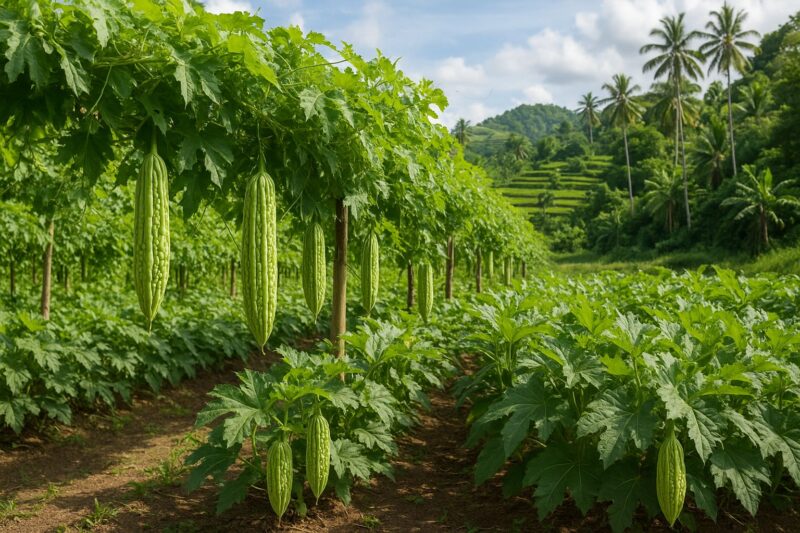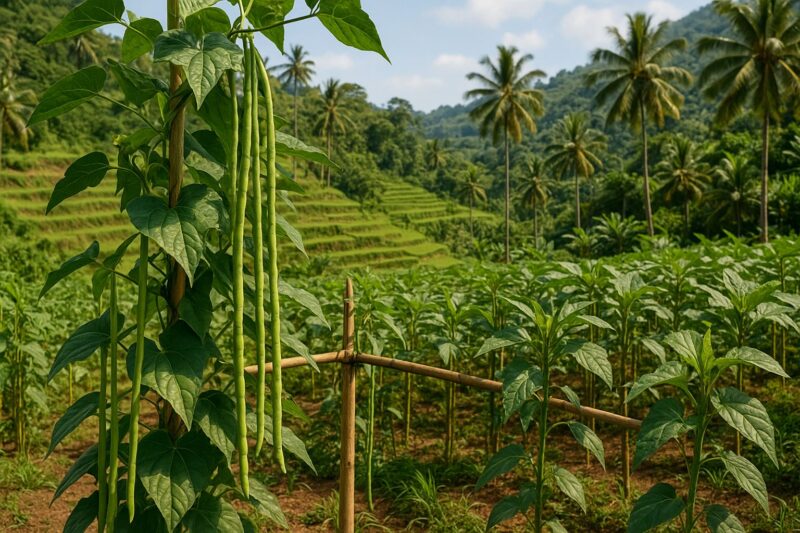Radish—labanos—may not be the first vegetable you think of under tropical skies, yet with the right timing and soil, its crisp, peppery roots can be harvested in as little as four weeks. From the cool terraces of Benguet to lowland plots in Bulacan, labanos thrives when you pay attention to variety choice, bed preparation, sowing window, watering, and simple pest checks. After several trial runs in my Bulacan home garden—and swapping notes with growers in Ilocos and upland plots in Tagaytay—I’ve settled on a routine that delivers consistent, succulent roots almost anywhere in the Philippines.
Variety selection comes first. Traditional long radish types—often called “market radish”—reach 20 to 30 centimeters and suit colder upland regions, maturing in about six weeks. In lowlands, quick-maturing round varieties, like ‘Tokyo Round’ or local white ‘Tambulig,’ ripen in four weeks and tolerate warmer nights. I plant round types in January and February in Bulacan, then switch to long radishes in cooler months or when I have shade cloth to tame midday sun. Mixing both keeps harvests staggered and your kitchen stocked with diverse shapes and flavors.
Soil preparation cannot be overlooked. Radishes demand deep, loose loam free of stones so roots can expand unobstructed. In Bulacan’s clay-loam, I double-dig beds to 30 centimeters and work in two wheelbarrows of homemade compost plus a handful of sand or rice hull charcoal to improve drainage. Sandy coastal soils—common in Leyte—benefit from added aged chicken manure to hold moisture without compaction. Aim for a pH between 6.0 and 6.8; if your soil is too acidic, a light dressing of dolomite lime helps.
Timing is crucial. Labanos loves cool, consistent temperatures. In lowlands, sow seeds from November through February; in uplands, you can extend sowing into March. In Bulacan, I start my first round around late November—right after the rains ease—so roots form quickly before daytime highs climb above 32 °C. A mid-January sowing under temporary shade cloth yields perfect roots by early March. Avoid planting in peak summer when heat and fluctuating soil moisture cause woody, pithy roots.
Sowing technique makes a difference. Broadcast seeds evenly across a prepared bed, then rake lightly to cover them one centimeter deep. For neat rows, make furrows 15 centimeters apart and drop seeds every two to three centimeters; later, thin seedlings to five-centimeter spacing so each root has room. Keep the seedbed consistently moist during germination—usually five days—by misting or light watering twice daily, avoiding puddles.
Water management is key. Radishes need steady moisture while roots bulge but hate waterlogged soil. I water deeply in the morning—wetting soil to a depth of 10–15 centimeters—then allow the surface to stay just damp by afternoon. Mulch lightly with rice straw to conserve moisture, moderate soil temperature, and suppress weeds that compete with tiny tubers.
Feeding is minimal but helpful. Since radishes mature quickly, I apply most nutrients at bed preparation—home-made compost provides balanced NPK. If growth seems slow after two weeks, I apply a light foliar spray of compost tea to boost foliage and support root bulking. Avoid heavy side-dressings of nitrogen; too much leafy growth delays root formation.
Pest and disease checks are straightforward. Flea beetles can speckle leaves; floating row covers during the first month prevent damage. Aphids cluster under leaves—spraying water or a mild garlic-soap infusion knocks them off. Root-knot nematodes are rare in well-amended beds but watch for galled roots; rotating with legumes or other non-root crops each season breaks pest cycles.
Harvesting labanos is its own reward. Round types pull easily when about five centimeters in diameter—often four weeks after sowing. Long varieties mature at six weeks; I test a few by gently squeezing the soil aside to check root thickness. If roots resist gentle tugging and their shoulders are visible above ground, I harvest promptly; leaving them too long produces tough, woody centers.
After pulling, shake off loose soil and lay roots on mats under shade for an hour to dry dew. Remove tops about two centimeters above the crown to prevent moisture loss but leave enough leaf for freshness. Store labanos in ventilated baskets lined with damp banana leaves, and keep in a cool, shaded area; they stay crisp for up to two weeks.
One season in Bulacan, after an unexpected February heatwave, my round radishes delayed bulking. I installed shade cloth and watered more frequently, recovering half the crop with tender roots within ten extra days—proof that quick interventions can salvage harvests.
Whether you carve neat rows in open fields or tuck raised beds into balcony planters, mastering variety choice, soil health, sowing window, moisture management, and simple pest controls will bring you crisp, peppery labanos across the Philippines. It’s a fast-turnaround crop that rewards careful timing—and perhaps a bit of daily checking—with fresh roots in under two months.
I’m open for consulting and speaking opportunities on sustainable vegetable production nationwide. Let’s grow together.
#Labanos #Radish #PhilippineFarming #SustainableAgriculture #HomeGarden #ConsultingAvailable #SpeakingOpportunities




